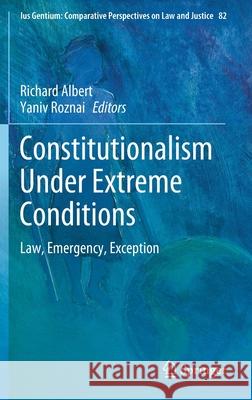Constitutionalism Under Extreme Conditions: Law, Emergency, Exception » książka
topmenu
Constitutionalism Under Extreme Conditions: Law, Emergency, Exception
ISBN-13: 9783030489991 / Angielski / Twarda / 2020 / 452 str.
Constitutionalism Under Extreme Conditions: Law, Emergency, Exception
ISBN-13: 9783030489991 / Angielski / Twarda / 2020 / 452 str.
cena 644,07
(netto: 613,40 VAT: 5%)
Najniższa cena z 30 dni: 616,85
(netto: 613,40 VAT: 5%)
Najniższa cena z 30 dni: 616,85
Termin realizacji zamówienia:
ok. 22 dni roboczych.
ok. 22 dni roboczych.
Darmowa dostawa!
Kategorie:
Kategorie BISAC:
Wydawca:
Springer
Seria wydawnicza:
Język:
Angielski
ISBN-13:
9783030489991
Rok wydania:
2020
Wydanie:
2020
Numer serii:
000354656
Ilość stron:
452
Waga:
0.81 kg
Wymiary:
23.39 x 15.6 x 2.54
Oprawa:
Twarda
Wolumenów:
01
Dodatkowe informacje:
Wydanie ilustrowane











